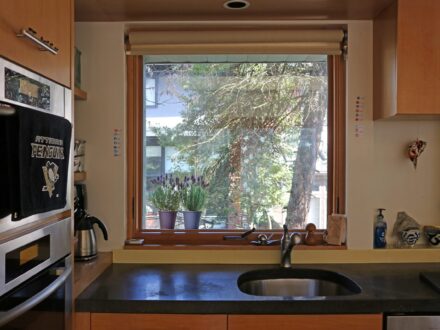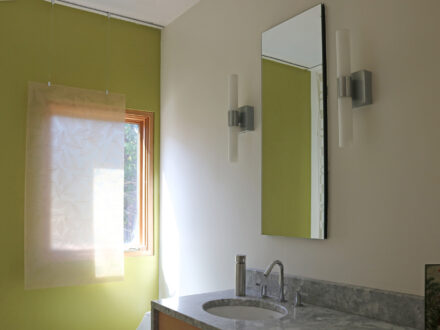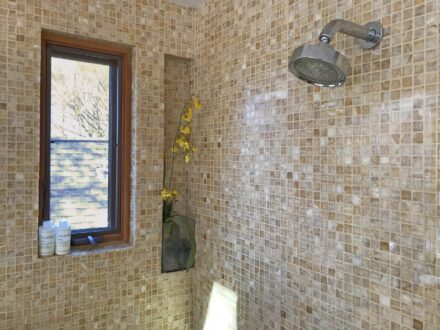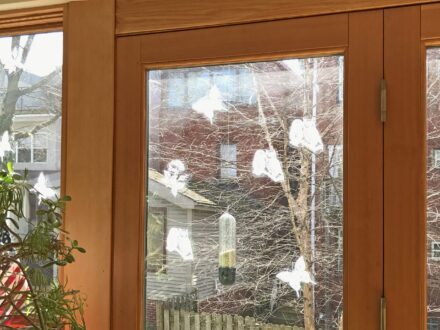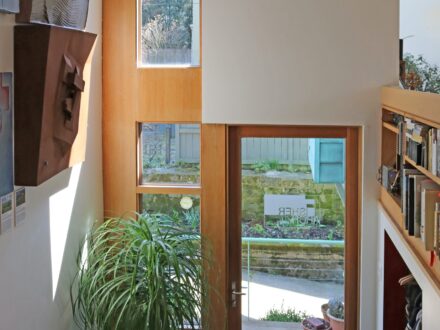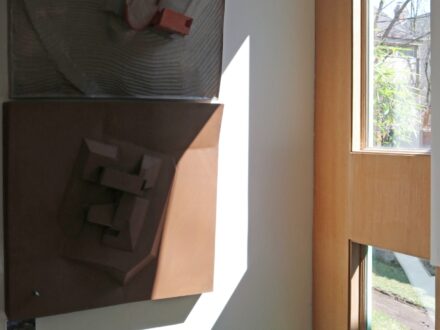By Bea Spolidoro, AIA, WELL AP
As millions of people around the world are asked to #stayhome, the dilemma for many is how to actually be healthy within the domestic walls. In this article we will focus in particular on the importance of having access to good lighting – natural and artificial – even when the budget is a concern. We will also review to optimize views to the outdoors even if we live in a dense urban context.
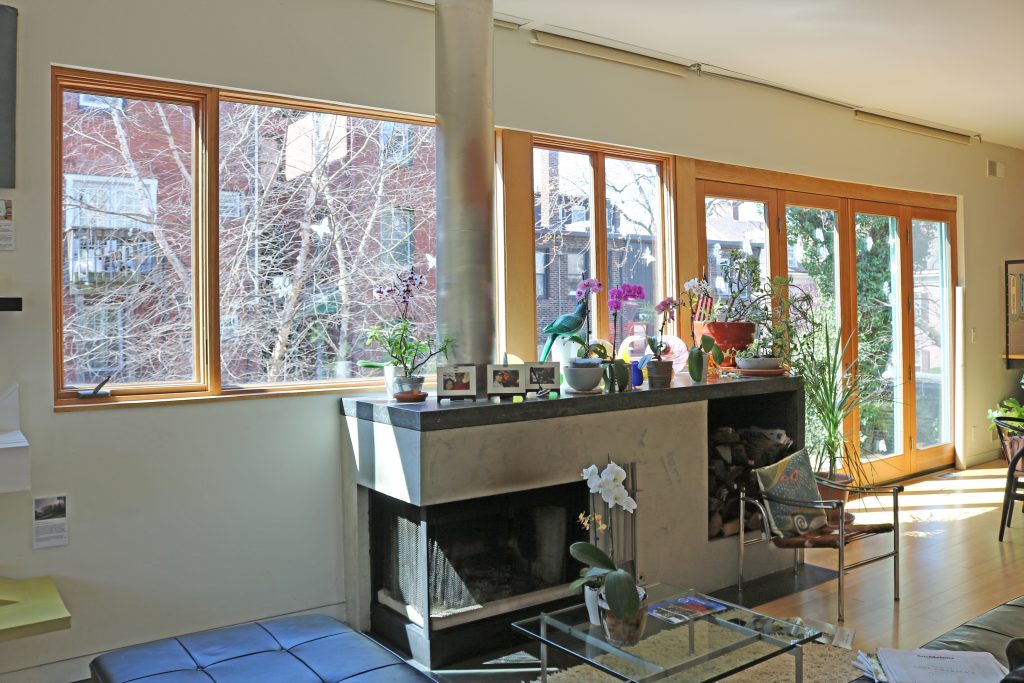
For the past few weeks, social media has been documenting in particular how we live and what we do inside our homes. At the time of writing this article, invitations to “remain inside and be safe” by celebrities showing off lavish habits in their expensive homes are causing a wave of outrage among those followers that – clearly – feel trapped indoors. While adding your sassy comments may provide a cheap thrill, the problem is more serious than what it may seem. Taking care of your wellbeing while forced at home is less about the price tag of “the stuff” you have, but rather about the architectural quality of the space you share with your family – or with yourself.
Everything the light touches
Taking advantage of natural lighting or capturing strong views to the outside while avoiding unpleasant ones doesn’t necessarily have to cost more money. Windows located only a couple feet from one another can produce radically different experiences. In architect-designed homes, the momentous decision of where to locate openings to the outdoors is typically made during the project “design development” phase.
If your home is already built, you may want to consider resizing a window, locating an opening in the direction of a neighboring roof for privacy, or “hiding it’ behind existing trees. At Fisher ARCHitecture, we love placing small windows into showers (at a safe height, of course!) and creating unexpected light sources for our projects – including in our home/office that was recently featured in our local newspaper, the Pittsburgh Post Gazette.
If you are concerned like us about birds colliding against big windows, you should plan for deterrents. Window stickers are a fast, cheap solution that actually works. It is even better to design with anti-bird collision patterns incorporated in your glazing. In general, birds will not try to fly into any hole – or opening that is perceived as such – that is less than 4” x 2”. Nowadays, glass manufacturers can even test their products in a few bird collision testing tunnels where no birds are actually harmed.
Skylights can be added only on the uppermost floor but can provide an interesting alternative to traditional windows. As well, bow windows and dormers can provide extra space and private nooks in bigger rooms, providing a smaller scale-of-space perfect for kids or adults that need a moment for themselves. That is what we did in the Ewing House.
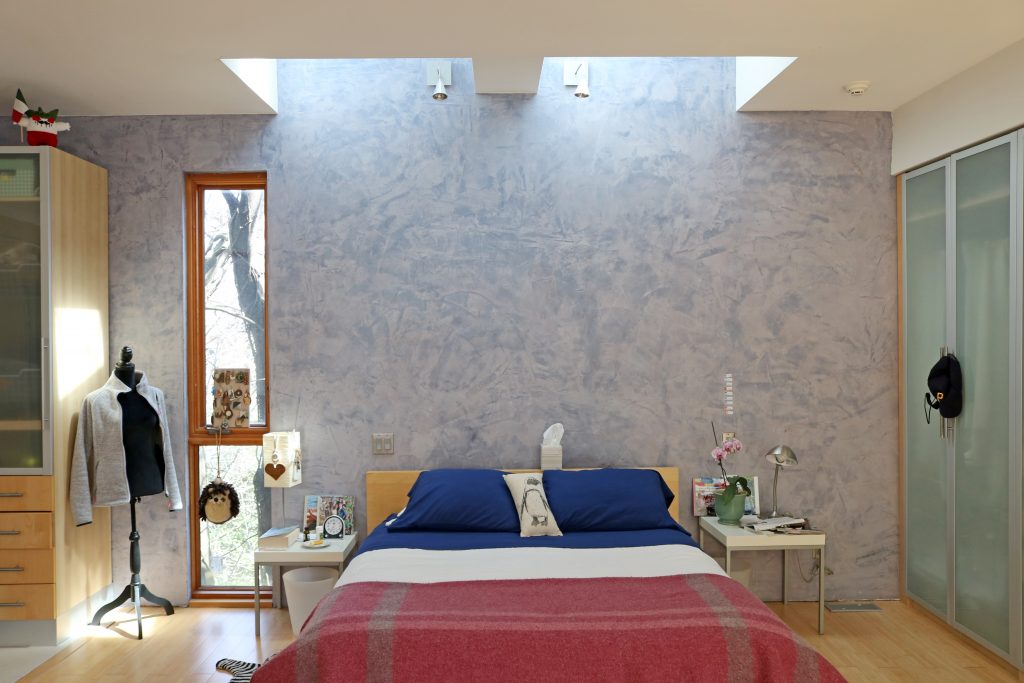
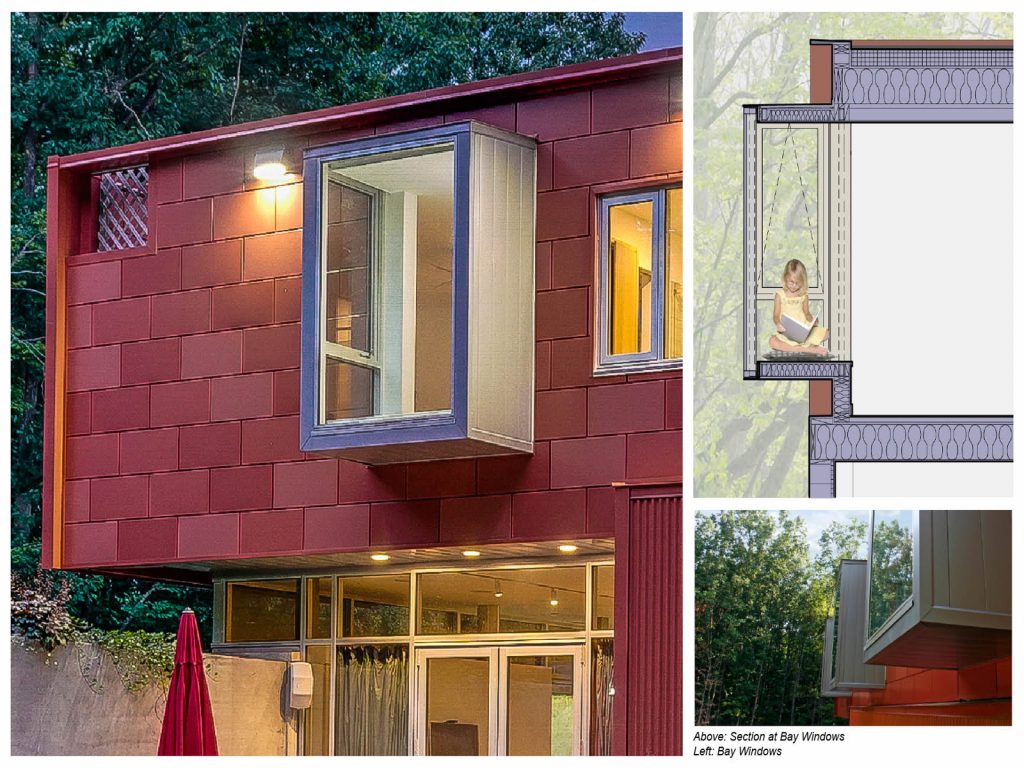
The impact of natural lighting on our circadian rhythm is substantial and widely recognized at this point. Moreover, the business for SAD (seasonal affective disorder) lighting is booming as a result of new research on the impact of light therapy on a variety of diseases. Lastly, the positive effect of natural views for hospital patients has been understood since at least the 1980s. While scientists are still debating on the actual extent of the benefits of having windows, say, in hospitals, we can all agree that having homes with lots of natural light is better than living in a dark basement. (Incidentally, the 2019 acclaimed movie “Parasite” was partially based on such a premise and is now being quoted in many #guillotine2020 tweets against celebrities).
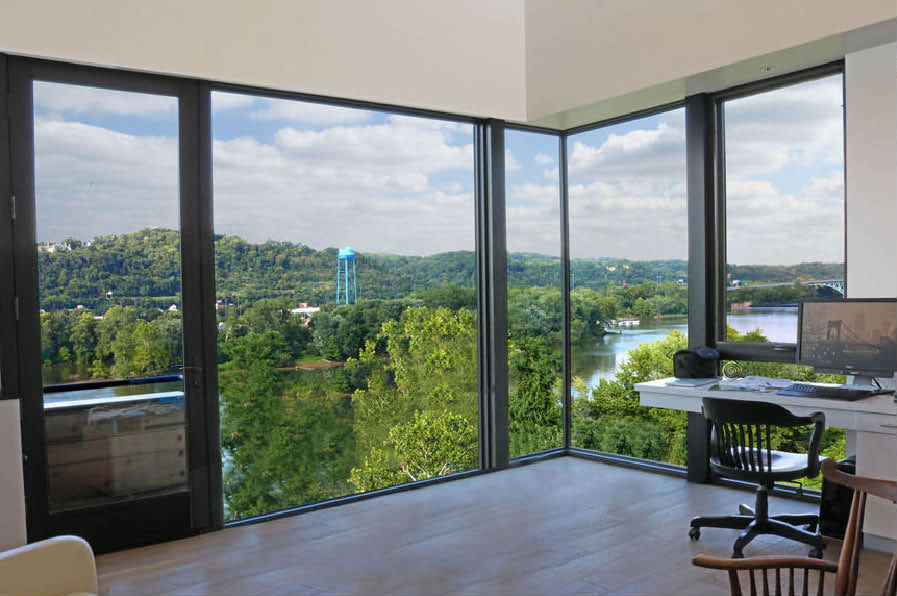
Screens and brise-soleils are also a way to manage the privacy levels while allowing for some light. Alternatively, a variety of glazing types can be used to modulate light. For example, polycarbonate translucent surfaces can provide light but not sight, guaranteeing privacy while bringing in lots of natural illumination. In this detail from the Fisher Residence, the studs have been positioned so that they can be seen from inside, giving a sense of rhythm for the room. They could also be positioned a few inches from the polycarbonate surface if an uninterrupted glow is preferred.

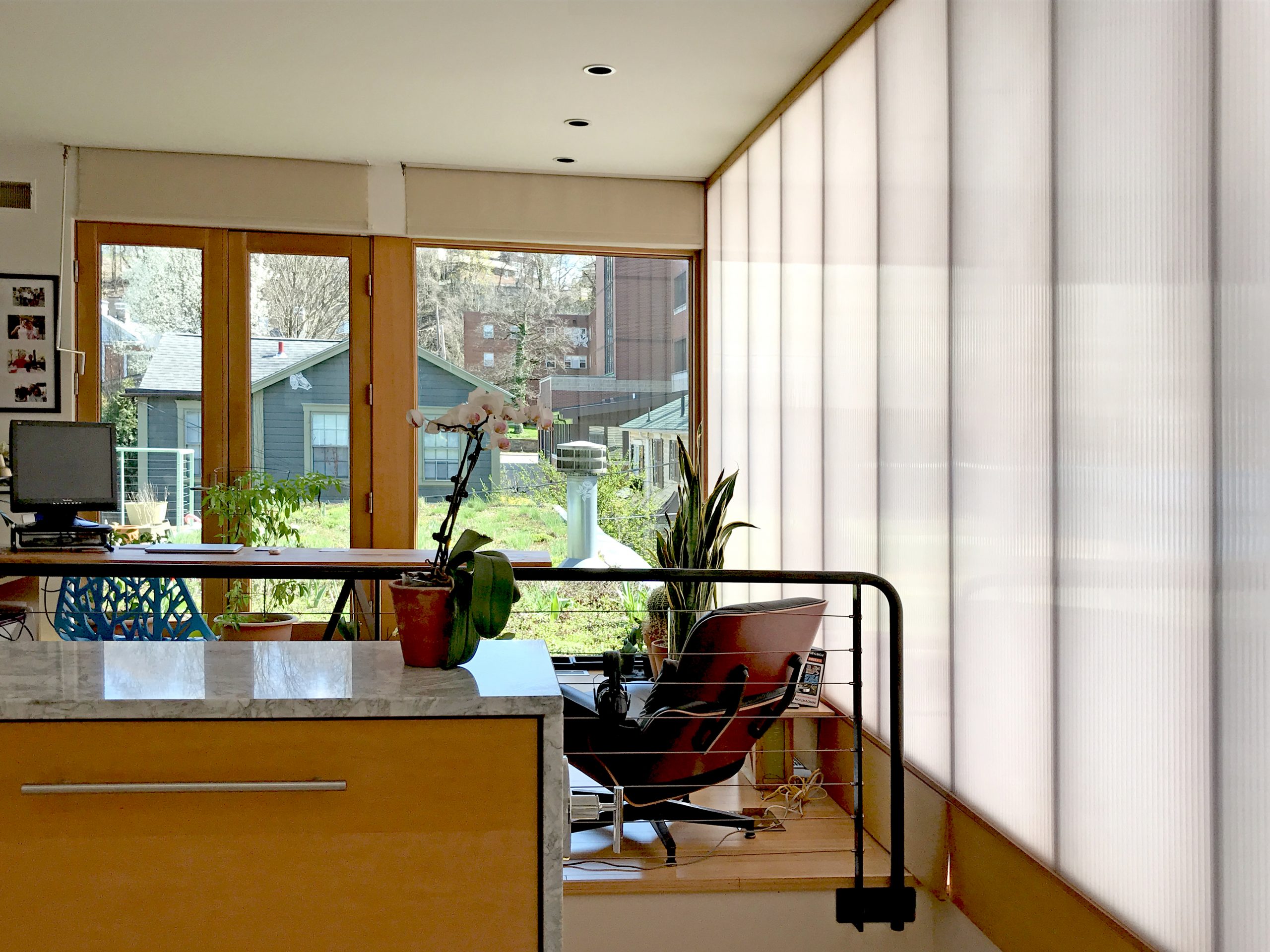
All major architectural building certifications and standards now require regular access to natural daylight and to exterior views for the regular occupants. One goal is to increase the exposure of occupants to the night/day light cycle. The WELL Standard goes so far as to request the promotion of “Lighting Education” for the occupants for every applicant, by providing them with:
“educational resources on circadian rhythm, sleep hygiene, age-related increases in light requirements and/or importance of daylight exposure on circadian and mental health”.
Outdoor views have other benefits: it is particularly important in our digital age as we work at home from our computers to provide a relief for the eyes that might be otherwise focused solely on a pc screen a few inches from your face. You can find a number of variations on the 20, 20, 20 rule, recommending that for every 20 minutes spent looking at a screen, a person should look at something 20 feet away for 20 seconds. In the LEED Certification standard, one credit is given to the multifamily projects that
“for at least 50% of the regularly occupied spaces in each residential unit, have one window that includes one of the following: (1) flora, fauna, or sky; or (2) objects at least 25 feet from the exterior of the window. Qualifying windows must provide a clear image of the exterior, not obstructed”.
Do you see the (quality of the) light?
When natural daylight is not sufficient, the Illuminating Engineering Society (IES) Handbook is one of the base documents that contain illuminance recommendations for indoors and outdoors spaces. Since the intensity of the light varies with the distance from the light source, every project should carefully plan the workplane height, the distance of the source of light and the target of illumination. Where ceilings are low, for example, the risk is creating overly harsh light conditions. Where ceilings are high, lighting should be coordinated in order to avoid the creation of distractive multiple shadows, as if you were in a soccer field.
Color temperature is also an important factor. Warm or cool light can define the mood of a space. Offices may be designed on the cooler end of the spectrum, while homes may be on the opposite end. The ability to dim indoor lighting, together with occupancy sensors and “smart home” technologies, can improve the energy efficiency of a building while providing a varied light quality. You can find also lighting and bulbs that change color temperature and intensity during the day, mimicking the daylight cycle and supporting the circadian rhythm functioning.
Color Rendition is also an important factor in the quality of indoor spaces. Apart from decorative fixtures and emergency lights, the rest of the project lighting should ensure faithful color rendition of various objects in comparison with “an ideal or natural light source”. Fluorescent lights can have a CRI (aka ‘color accuracy’) of 50 for the basic types, with the maximum possible and ideal CRI of 100. Typical LEDs have a CRI of 80 or more, up to 98. According to the WELL Standard, a CRI of 90 is preferred, since
“using electric light with high color rendering can improve people’s perception of a space, and low color rendering can impact the ability to differentiate between objects and perceive the surroundings accurately.”
Flickering is also an issue addressed by the WELL Standard. All things considered, it is always better to have as much natural light as possible while being well prepared for the darkest times of the day.
Lighting Control strategies
Quoting a famous commercial, “power is nothing without control.” Controlling natural light in buildings is a big concern for any major building standard. The WELL Standard and Fitwel both promote glare and brightness control strategies. Glare can be equally caused by either natural and artificial sources and is particularly annoying for people using computers.
At Fisher ARCHitecture, our home/office receives light from both the East (in the morning) and the West (in the afternoon). To prevent glare on our computers, we have manually operated rolling shades that we use every day in mid-Winter and mid-Summer.
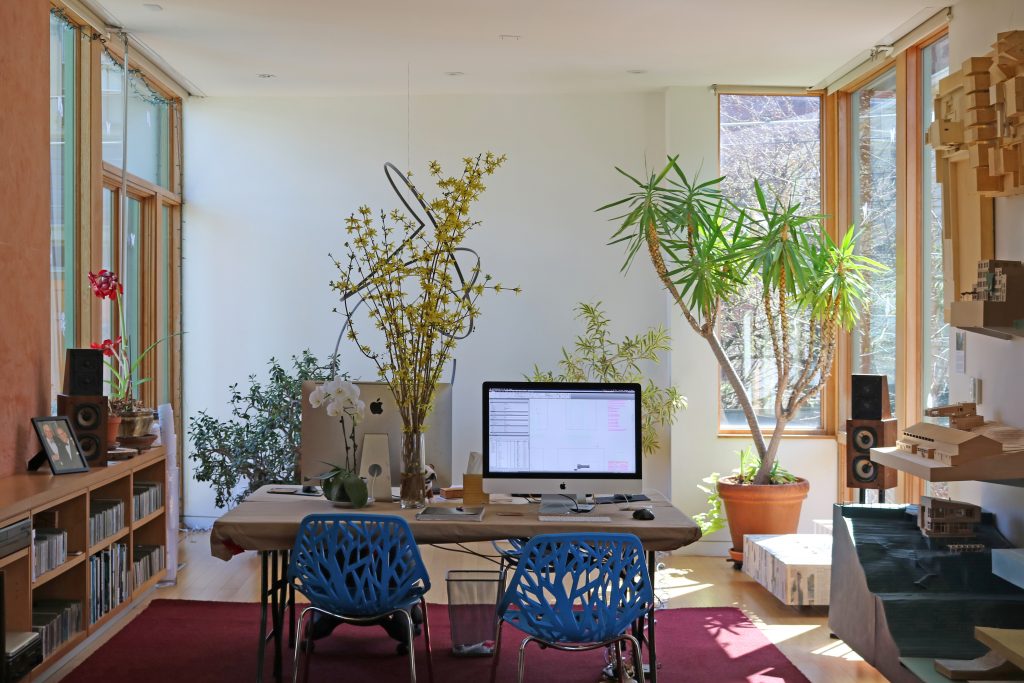
That being said, we are happy to have access to good lighting during the rest of the year. Using shades for a month or two isn’t so bad.
Some new corporate offices address this issue with automated shading devices connected to a geolocated light reader. What do WE do? We just send our most recently hired intern around our home/office with instructions to raise or lower the shades as needed. Just kidding…
Good visual balance is needed every time there is a big difference in luminance between adjacent spaces. The goal is to achieve smooth transitions wherever possible. Supplemental lighting can be added to darker areas. Otherwise, light can be dimmed down in the brightest zones.
See and be seen
Le Corbusier said that “Architecture is the learned game, correct and magnificent, of forms assembled in the light.” This quote is aspirational but also an open challenge: The more light is let into a space, the more privacy can leak out. The task for designers is to create environments that balance privacy needs, good natural lighting, and views to the outdoors. Our recommendation is to be just bold enough to think out of the box, either with an atypical location or with the choice of opening.
Science can help us with defining baselines and general guidelines but successful architecture projects should plan for flexibility and adjustability of every space. It is also fundamental to respect the comfort levels of our clients, in terms of light and sight, but also to offer them the choice to optimize every inch of their projects. Lastly, a project should suit a variety of people, different in ages, customs, traditions, and opinions.
As we wish everybody to have the opportunity to live and/or design places full of light, we are already writing the next article on flexibility of spaces over time, and aging in place. You will find it again on our website www.fisherarch.com and on our social media.
Until then, be well.

